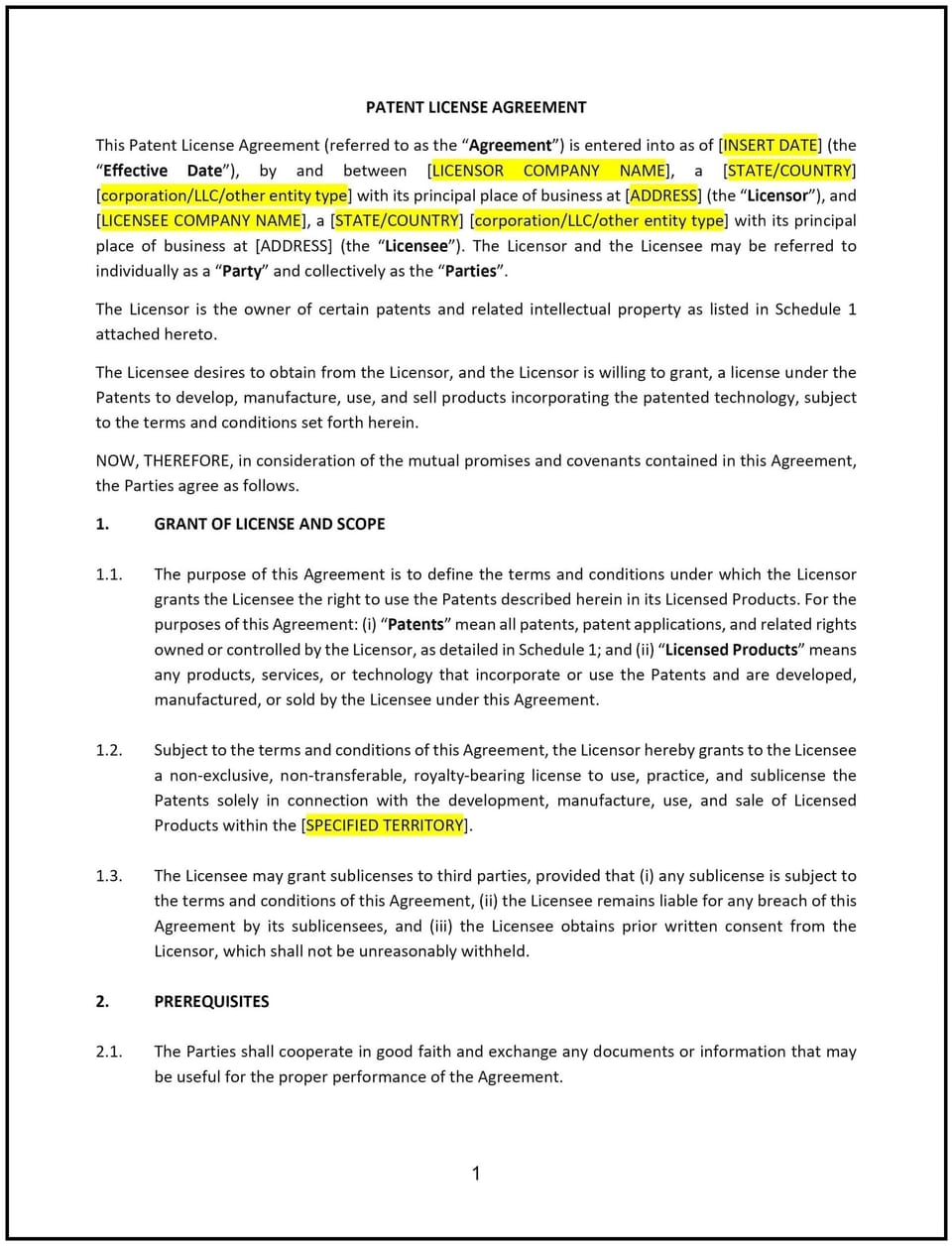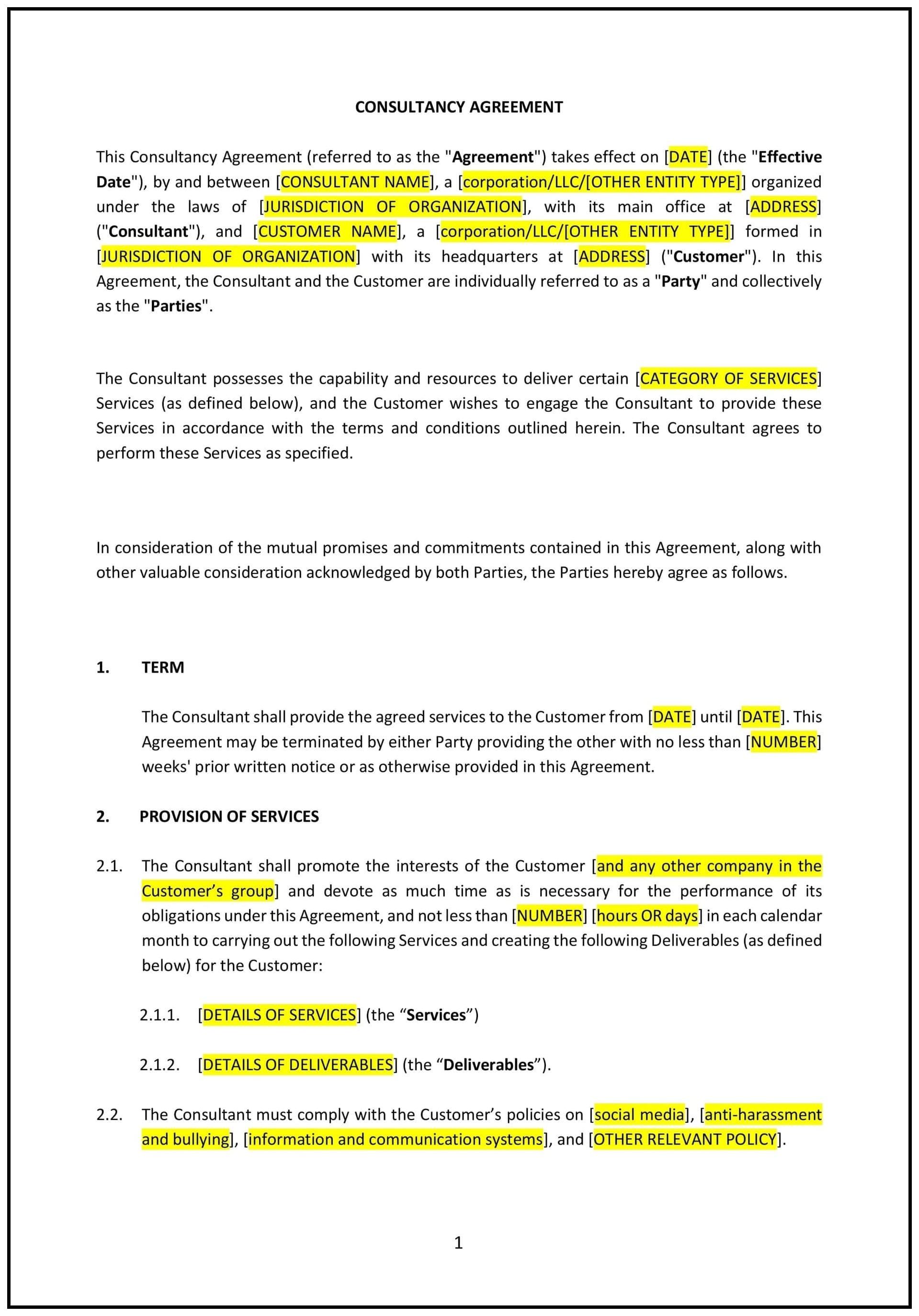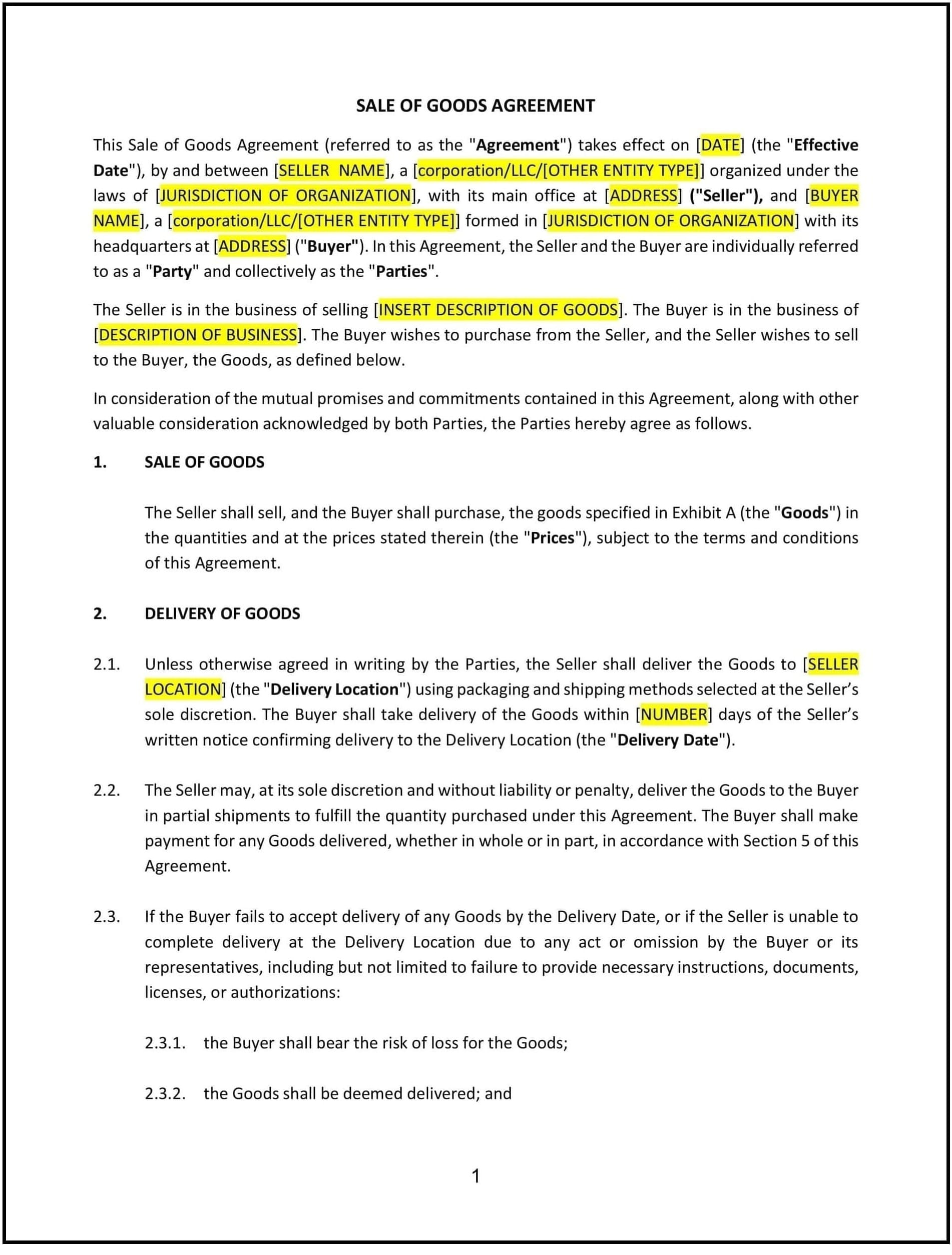Patent License Agreement (Alaska): Free template

Patent License Agreement (Alaska)
A Patent License Agreement is a legal contract between the owner of a patent (the "Licensor") and another party (the "Licensee"), granting the Licensee the right to use, manufacture, or sell the patented invention under specific terms and conditions. In Alaska, this agreement must comply with state laws regarding contracts, intellectual property, and business transactions. A well-drafted agreement ensures clarity, minimizes disputes, and protects both parties' interests.
For example, an oil and gas company in Anchorage might license its patented drilling technology to a manufacturer in Fairbanks. A clear Patent License Agreement specifies the scope of the license, payment terms, confidentiality, and other critical details.
Tips for drafting and maintaining a Patent License Agreement in Alaska
- Identify the parties: Clearly specify the names, contact information, and roles of both the Licensor and the Licensee.
- Example: “This Patent License Agreement is entered into by [Licensor Name], located at [Address], and [Licensee Name], located at [Address].”
- Define the patent: Clearly describe the patent being licensed, including the patent number, title, and any related intellectual property.
- Example: “The Licensor owns U.S. Patent No. [Patent Number], titled [Title of Patent], which relates to [Brief Description of the Invention].”
- Specify the grant of license: Outline the type of license being granted (exclusive, non-exclusive, or sole) and the scope of the license.
- Example: “The Licensor grants the Licensee a [Exclusive/Non-Exclusive/Sole] license to use, manufacture, and sell the patented invention within [Territory].”
- Address pricing and payment terms: Outline how the Licensee will compensate the Licensor, including royalties, lump-sum payments, or other financial arrangements.
- Example: “The Licensee shall pay the Licensor a royalty of [Percentage]% of net sales generated from the use of the patented invention, payable quarterly.”
- Include performance standards: Detail any obligations of the Licensee, such as minimum sales targets or quality standards.
- Example: “The Licensee shall maintain a minimum sales volume of [Amount] units per year to retain the license rights.”
- Include confidentiality and data protection: Protect sensitive information shared between the parties during the licensing period.
- Example: “Both parties agree to keep all proprietary and confidential information disclosed during the term of this agreement strictly confidential.”
- Define intellectual property rights: Clarify that the Licensor retains ownership of the patent, and the Licensee only has limited rights as outlined in the agreement.
- Example: “All intellectual property rights associated with the patent remain the sole property of the Licensor.”
- Add liability and indemnification: Clarify each party’s liability in case of errors, damages, or breaches of the agreement.
- Example: “The Licensee shall indemnify the Licensor against any claims arising from the Licensee’s use of the patented invention.”
- Include a termination clause: Specify conditions under which the agreement can be terminated by either party.
- Example: “This agreement may be terminated by either party with [Number] days’ written notice or immediately in the event of a material breach by the other party.”
- Outline governing law and jurisdiction: Ensure the agreement specifies that it is governed by Alaska law and identifies the appropriate courts for dispute resolution.
- Example: “This agreement is governed by the laws of the State of Alaska. Any disputes arising under this agreement shall be resolved in the courts of [Borough], Alaska.”
- Include signatures: Both parties must sign and date the agreement to make it legally binding.
- Example: “IN WITNESS WHEREOF, the parties have executed this Patent License Agreement as of the date first written above.”
Frequently asked questions (FAQs)
Q: Does Alaska recognize Patent License Agreements as enforceable contracts?
A: Yes, Patent License Agreements are enforceable contracts in Alaska, provided they meet the basic requirements of a valid contract, such as mutual consent, offer, acceptance, and consideration.
Q: What happens if the Licensee violates the terms of the Patent License Agreement in Alaska?
A: If the Licensee breaches the agreement (e.g., by using the patent outside the agreed scope), the Licensor may pursue remedies such as termination of the agreement, monetary damages, or injunctive relief to stop unauthorized use.
Q: Are there specific laws in Alaska governing Patent License Agreements?
A: While Alaska does not have specific laws exclusively for Patent License Agreements, general contract law and federal intellectual property laws (such as those enforced by the U.S. Patent and Trademark Office) apply. Compliance with these laws is essential.
Q: Can a Patent License Agreement in Alaska include exclusivity clauses?
A: Yes, exclusivity clauses can be included, but they must be clearly stated and mutually agreed upon. For example, the Licensor may grant the Licensee exclusive rights to use the patent in a specific industry or geographic area.
Q: How does Alaska’s data protection law affect Patent License Agreements?
A: If the patented invention involves sensitive data (e.g., software or biotechnology), Alaska’s data protection laws may require both parties to safeguard personal or financial information. Compliance with these laws is necessary to avoid penalties.
This article contains general legal information and does not contain legal advice. Cobrief is not a law firm or a substitute for an attorney or law firm. The law is complex and changes often. For legal advice, please ask a lawyer.


